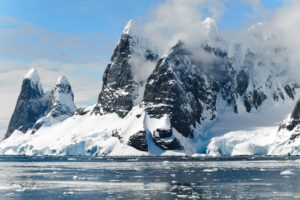 Truly intrepid travellers love to explore new places, and there are few more wild and unexplored places on Earth than Antarctica.
Truly intrepid travellers love to explore new places, and there are few more wild and unexplored places on Earth than Antarctica.
While the climate is not exactly inviting, taking a cruise to Antarctica will offer you the benefit of luxurious and comfortable surroundings, while experiencing some of the most dramatic scenery and diverse wildlife in the world.
Antarctica is still a pristine wilderness. The best time to cruise Antarctica is from November to February. Imagine cruising among beautifully sculpture icebergs and breathtaking glaciers.
Cruise packages often include the option to land on remote beaches and visit modern scientific research stations. There is a staggering amount to learn on such a trip, so you will be stimulated and relaxed in equal measure.
Vessels that travel to Antarctica are ice-strengthened and comfortable and you will enjoy the creature comforts of gourmet food and top class facilities on board.
Antarctica is a vast continent, but here are a few of the highlights you may enjoy while cruising.
Port Lockroy
Port Lockroy, on scenic Neumayer Channel, is home to the recently restored buildings of Britain’s Base A, which is now part of the British Antarctic Heritage Trust, and maintained as a museum. Large colonies of gentoo penguins, as well as a small group of blue-eyed shags live in the area.
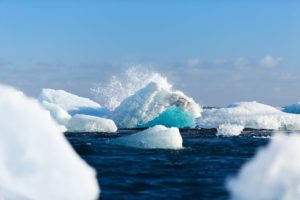 Half Moon Island
Half Moon Island
One of the most pleasant landings in Antarctica, with a sizable rookery of chinstrap penguins, as well as nesting Antarctic terns and kelp gulls. Whales are quite often seen patrolling the shores, and this small island offers stunning views of surrounding mountains.
Elephant Island
In 1916, stranded on Elephant Island with no hope of rescue, Sir Ernest Shackleton set out on an epic mission to save his crew. All 22 men were saved in what remains one of the bravest rescues in exploration history. Visitors to the island can view chinstrap and macaroni penguins near Cape Lookout.
South Georgia Island
Mountainous, ice-clad, alone at the edge of the Scotia Ridge, these are the most picturesque of the subantarctic islands. A short hike past the resting elephant seals will bring you to the grave of explorer Sir Ernest Shackleton in Grytviken. A colony of an estimated 100,000 king penguins awaits your visit at the Bay of Isles.
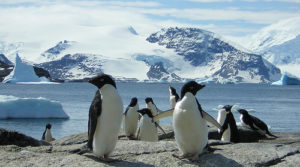 South Orkney Islands
South Orkney Islands
Over 85 percent of these remote and rugged islands are glaciated, hence the name “Inaccessible Islands.” Conditions permitting, visit Orcadas, the oldest continuously-manned research station in Antarctica, located on Laurie Island. Native birds such as snow and cape petrels, skuas and prions await.
Commonwealth Bay
Sir Douglas Mawson, during his 1911-13 expedition named the bay and Cape Denison and initiated not only an historic expedition but also Australia’s extensive Antarctic land claim.
The Ross Ice Shelf
This southernmost expanse of the Pacific Ocean was named after James Clark Ross who first explored the area in 1841 with two ships, Erebus and Terror. The shelf is a flat-topped body of snow-covered glacial ice about the size of France that largely floats except along the coastlines.
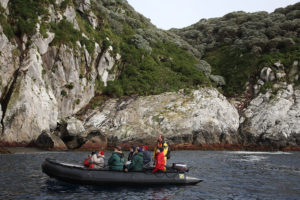 Snares Island
Snares Island
The Snares Islands belong to the World Heritage listed Sub Antarctic Islands – renown for their natural beauty and abundant wildlife. To protect the wildlife on these remote islands, landings are not permitted and so, if weather permits, Ship’s guests will have the opportunity to view the prolific pelagic birdlife from a Zodiac exploration of the sheltered eastern coastline. Among the birdlife you may see Cape Pigeons, Antarctic Terns, White-fronted Terns, Sooty Shearwaters and Snares Crested Penguins.
Cape Denison
It is the windiest place on the face of the earth (as recorded by an automatic weather station). It is surrounded by spectacular ice cliffs and is home to 60,000 Adelie Penguins, Snow Petrels, Giant Petrels, Wilsons Storm Petrels and Cape Pigeons. Weddell, Leopard and Elephant seals may be seen stretched out on the ice. This is one of the Antarctic’s least visited sites. As the first Australian scientific base on the Antarctic, it is of great historical significance and is the subject of an ongoing multi-million dollar preservation programme.







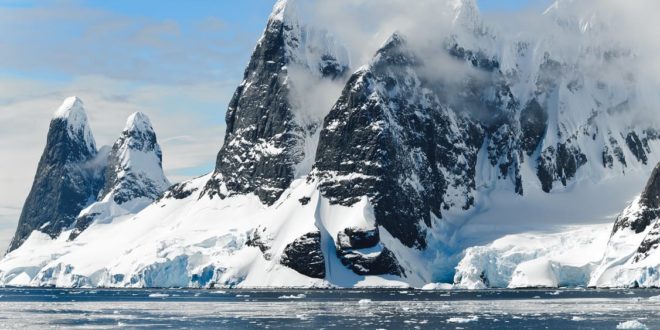

Join the Discussion
Type out your comment here:
You must be logged in to post a comment.